More than thirty years after PTSD received an official diagnosis, and decades of trauma research that identifies recovery measures, American legislature and society maintains a punitive approach toward individuals and families suffering from severe metal health disorders. Why?
PART I: PTSD In Babies and Soldiers
The Diagnostic and Statistical Manual of Mental Disorders (or DSM) of 1952 was the first of it’s kind. The volume listed various types of “neuroses” and “disturbances of personality,” along with guidance for the treatment of mental disorders.
Twenty-five years after the first DSM, American Vietnam veterans caused an unprecedented push for the recognition, recording, and treatment of their trauma. In 1980, PTSD made it’s debut as an American diagnosis. The DSM was on it’s third edition.
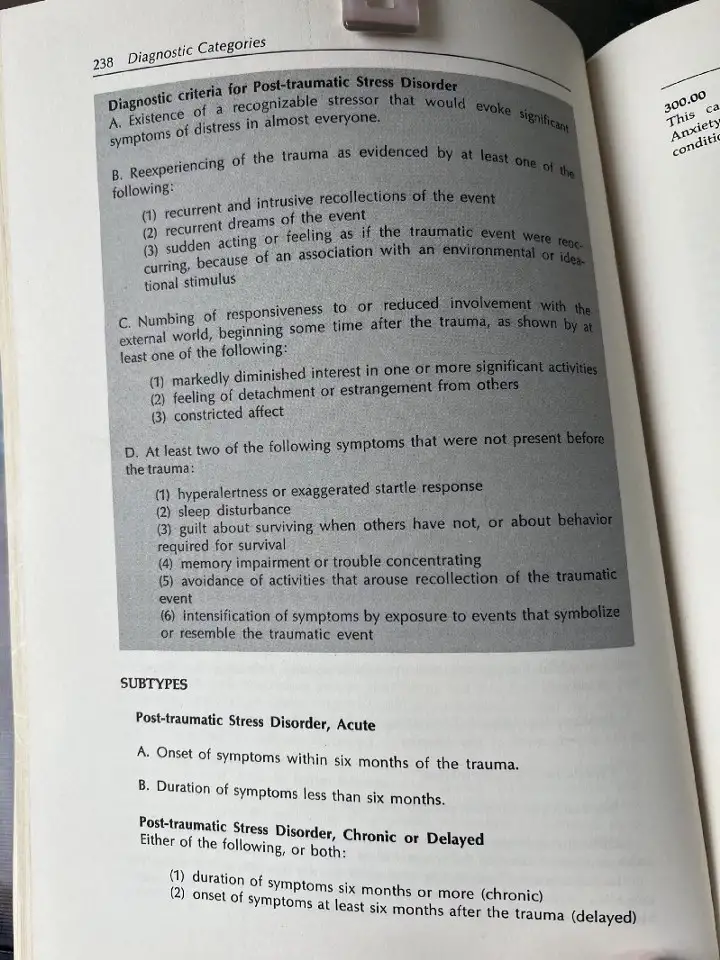
Disturbances in Early Childhood Behavior directly correlate to Abuse/Neglect
Reactive Attachment Disorder (RAD) was also first debuted in the DSM III in 1980. Initially a disorder of infancy, the DSM III’s diagnosis of Reactive Attachment Disorder of Infancy is grim. The first and second criteria are onset before 8 months old, and “lack of the type of care that ordinarily leads to the development of affectional bonds to others, e.g., gross emotional neglect, imposed social isolation in an institution.” (DSM-III, American Psychiatric Association, p. 59).
Reactive Attachment Disorder of Infancy (RAD) is unique in its etiology, as the only mental health diagnosis in infancy. Researchers found that unlike PTSD and other mental health disorders largely viewed as chronic, RAD symptoms are reversible. This is important: introducing positive stimuli to patient environment, within a specific timeline during infancy, can observably reverse RAD.
In other words, therapeutic interaction fosters healthy early human development.

In 1987, the DSM III-R expanded both diagnoses of RAD and PTSD. Enough data existed to increase the age ranges and definitions of childhood behaviors caused by neglect, isolation, and abuse. RAD also expanded to include specifiers for maladaptive behaviors in children.
By 1987 RAD’s age range increased to under the age of five. Its diagnosis now included two distinctly different specifiers: inhibited or disinhibited presentation of behaviors. Reactive Attachment Disorder of Infancy or Early Childhood gave official recognition of the link between disturbed behaviors in children and physical and emotional abuse and/or neglect.
***
Common Responses to Uncommon Events
PTSD is complex diagnosis. Its causes and symptoms have an enormous impact on various peoples from all walks of life. However, PR and media interpretations successfully coopted PTSD for the glory of American the flag. Entertainment and media have added the disorder to the propaganda of incomparable honor and sacrifice reserved exclusively for soldiers.
It’s no accident that what most people know, or think they know, of PTSD involves American combat veterans. The VA has long been, and remains, a major source of funding for PTSD research in America. Even though PTSD research conducted by white women had reflected a social influence of second-wave feminism, the disorder has become primarily associated with war and the American soldier.
Never mind the ghosts of the people who live with symptoms they can’t always understand, at the mercy of their central nervous systems – which experience common biological responses to severely uncommon external events. People can suffer PTSD regardless of age, gender, sex, or military experience.

Part II: The Exclusion of Trauma Data & How American Legislature Stigmatizes Trauma
The 1980s and 90s saw much progress in understanding trauma and attachment. However, into the early 21st century, trauma-related research remains mostly white and Western-centered.
Trauma caused by historical and current racist caste systems (forced family separation, and enslavement, or ongoing societal and economic suppression) have been so accepted as norms, that deeper research into its nuances is limited.
Fifteen years after America’s military failure in Vietnam, white women psychiatrists like Dr. Lenore Terr and Dr. Judith Lewis-Herman were producing data that women and children suffered the same symptoms of PTSD from child sexual abuse, as victims of sexual assault, and as victims of crime. These women were making important strides in the white, cis-het, white-male-led-and-dominated field of psychiatry. Yet the larger conversation around trauma rarely cites, or includes their findings.
While research on childhood contributed directly to the diagnostic criteria for RAD, distinct criteria separated it from PTSD. Each was its own disorder.
What is RAD?
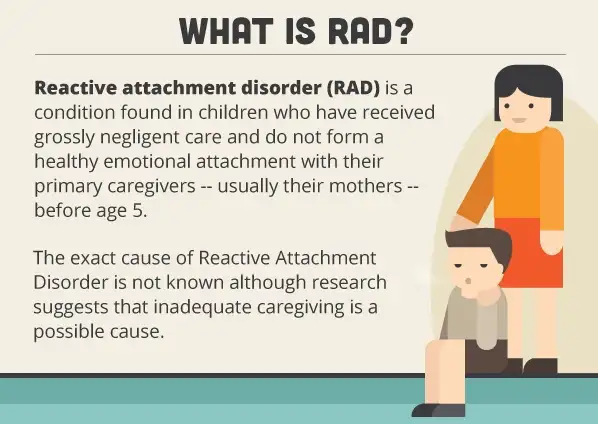
Instead of accepting RAD as an objectively universal outcome of abuse and/or neglect in early development, the state used it as clinical shorthand to justify forcible separations of young children from their family.
In 1987, PTSD diagnoses expanded to include children’s experiences including traumatic play, and a loss of previously-acquired developmental skills like toilet training.
Curiously, the progression and treatment of RAD vs. PTSD in children were studied separately.
Unfortunately, it took children dying in so-called “holding therapy” for troubling therapies disguised as RAD “treatments” to end. Even though consistent intervention reverses RAD, treatment still actively involves family separation and inconsistent living conditions. Both are related to documented causes for persisting symptoms: abuse and isolation.
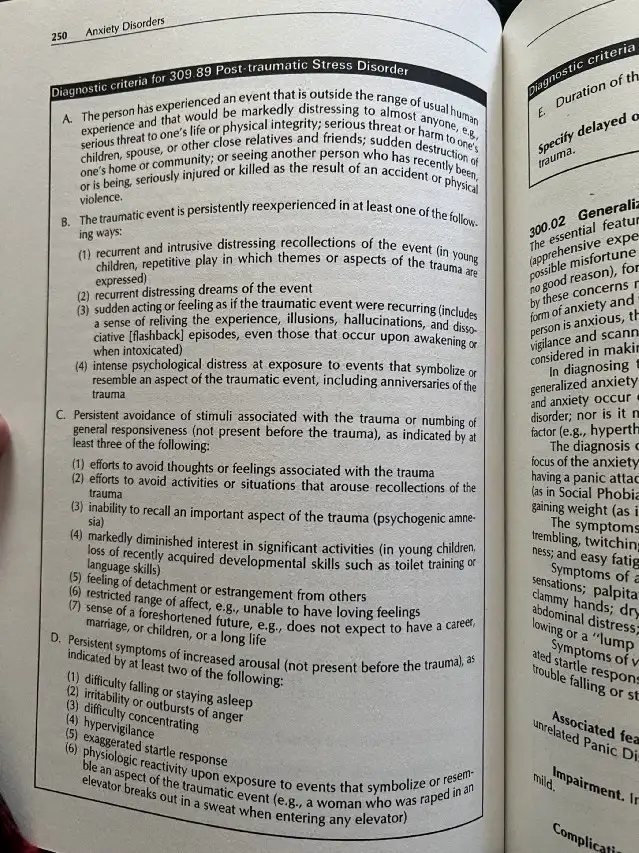
In 1994, DSM-IV was published and revised yet again. Joe Biden had just argued vehemently for his Biden-Hatch Crime Bill. In it he championed for further punishments for “thugs […]regardless of any traumatic background.” The bill’s language normalized and rationalized discarding (and disregarding) people deemed beyond help. It had been thirteen years since the understanding of PTSD had reached American public awareness.
This video breaks down Biden’s introduction of the Crime Bill of 1994. He sounds almost poetic in his understanding and description of developmental trauma. But Biden’s speech describes trauma as a hopeless and permanent reason to fear and mercilessly incarcerate mostly Black people (and otherwise segregated portions of the American population).
Part III: White Supremacy and Trauma Trends

DSM 5, published in 2013, divided RAD into two disorders. Despite changes to the diagnostic criteria, and the fact that it’s now categorized as a Trauma Disorder, along with PTSD, developmental trauma is still weaponized against non-white populations. In four decades of research, RAD’s failure to be clinically associated with, or linked to, PTSD poses a valuable question for further research with an anti-racist lens.
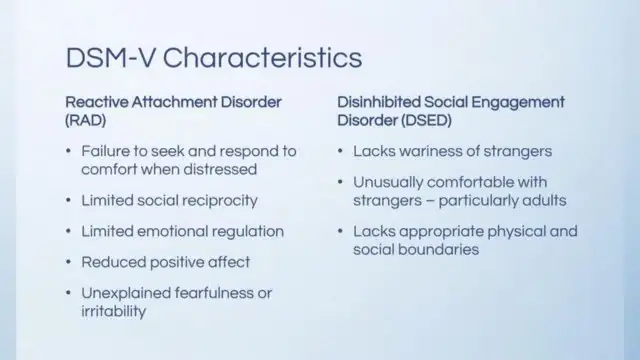
Mental Health & Foster Care
Nowhere is the racialization of RAD and now DSED more apparent than the intersection between mental health and the American foster-care-to-prison-pipeline. The DSM itself arguably creates a map of the pipeline: when there is a deprivation in an infant, remove the infant. When there is deprivation of the child, remove the child. This is how it’s always been done. And this practice targets mostly Black and Indigenous peoples in America.
By the time Congressman Biden made his speech in 1994, America’s foster care system was already targeting the Indigenous and Black children as a matter-of-course.
Words like “deviant” are still weaponized in clinical descriptors. And the overlap between high-risk diagnoses like Conduct Disorder (CD) and Oppositional Defiant Disorder (ODD) converge with a substantial lack of racial data. Somehow, even with a lack of in-depth data linking racial background to pre-disposition for trauma disorders, racists feel empowered to claim that “proof” exists of a racial superiority.
Lack of Comprehensive & Inclusive Data
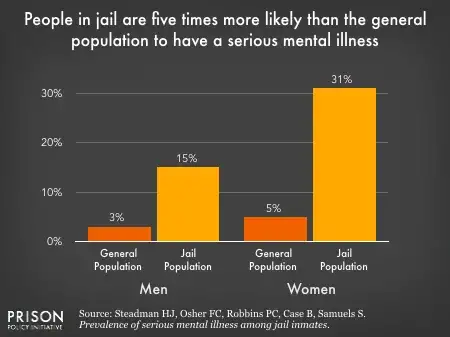
Biased politicians have long relied on data shortages to promote their skewed agendas, to the detriment of our society. Until recently, American trauma research rarely included autists, LGBTQIA2S+ populations, non-white, non-heterosexual populations.
PTSD and trauma are continually diminished or punished by American legislature; whether law makers attempt to eliminate CRT, or access to mental heath care for vulnerable peoples. The duty rests on those of us committed to justice and human growth to counter these dangerous denials.
Collective and continued tolerance of this erasure and omission brought us to this point.
***
Chicana-American and feminist activist Elizabeth Martinez’s definition of white supremacy states:
“White supremacy is an historically based, institutionally perpetuated system of exploitation and oppression of continents, nations, peoples of color by white peoples and nations of the European continent, for the purposes of maintaining and defending a system of wealth, power, and privilege.”
(Continue reading here.)
This definition allows us to understand how legislation weaponizes mental health and licensed professionals against people who need care and treatment. The field’s default requirement for “proof” could potentially result in countless LGBTQI2S+ youth being classified as mentally ill, stripped of their human rights, and denied equal opportunity to the same inalienable rights every citizen deserves. This is especially true for the most racially targeted populations.

A 2018 report from the Juvenile Law Center highlights how the “foster care to prison pipeline” has normalized anti-Black and anti-Indigenous attitudes, within the system, and linked to “mental illness.”
We are currently living that moment.

We can’t unsee how research on human trauma has been racially weaponized and commodified in ways which are continually viewed as social norms.
“It’s always been this way” is an unacceptable response which lacks imagination and hopefulness. We need creativity to envision a society that isn’t based on the (en)forced white, Christian, norms we’ve always accepted as “American.”
This includes disproportionate family separation as a matter-of-course into the child welfare system inequitable to the population, divided against racial and religious, socioeconomic, and nationalized citizenship lines.
Those of us working in mental health have an opportunity to stop being tools of white supremacy.
I am here for creativity and self-examination. It’s not too late.
Not yet.
- The first DSM declared homosexuality a form of “sociopathic personality disturbance — ” in case you wondered what kind of baseline we are working with here with the rising industry of trauma in America…but that will be another writing for another day.




